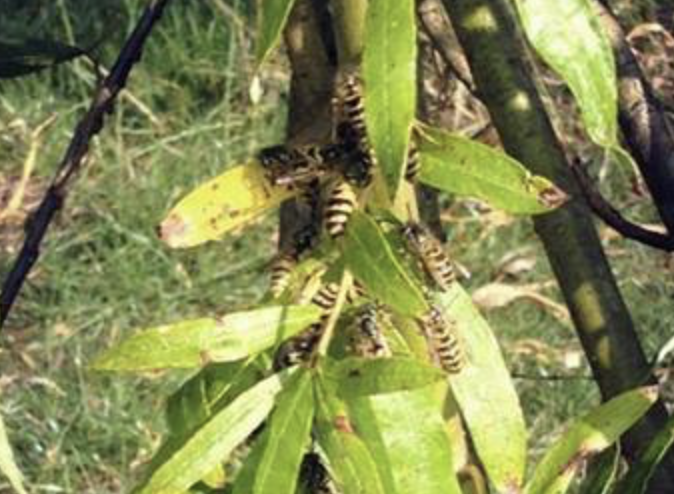It is now that time of year that wasps start becoming a real nuisance. All through the summer the larvae within the nests reward the worker wasps with a small sugar “Fix” by means of a small secretion they give, this staves off the sugar cravings of the stinging worker wasps.
As the nests start to move into disarray and breakdown there is not enough larvae to supply the workers with their sugar fix and this is when they have to go out and find their own supply.
We all know they can be a pain around sweet foods and bins containing drinks cans etc, but there are other ways they can get their “Fix” Some plants which attract aphids can be literally swarmed by wasps trying to get honeydew from the aphids.

Plants that display something known as extra floral nectaries these are specialised nectar-secreting plant glands that develop outside of flowers and are not involved in pollination, generally on the leaf or petiole (foliar nectaries) and often in relation to the leaf venation are often targeted.
Many times people think they have a nest in these plants but it is not the case. If a nest is present you will see a direct flight path in and out of a hole in the shrub or plant, instead when wasps are foraging for the sap/nectar you will see them “Milling” around the plant often crawling around on the floor beneath also.
There is very little that can be done to prevent this behaviour other than remove the plant/tree/shrub in question and this is not always practical. This behaviour will last a few weeks until late September into October.
If a nest can be located we can always offer treatment. We can also offer wasp trapping in the case of wasps feeding around bins and eating areas.






